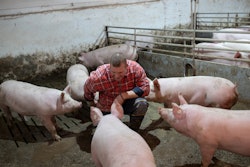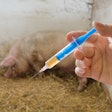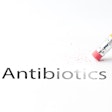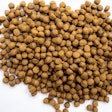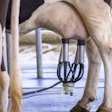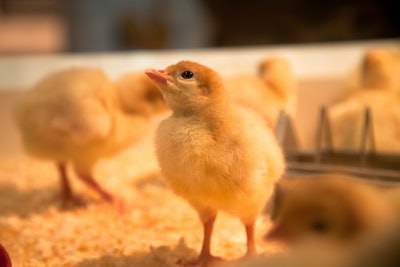
Automated chick sexing technology powered by artificial intelligence (AI) could revolutionize hatchery operations by improving efficiency, animal welfare and production outcomes.
Manual sexing often causes wing damage from handling and declines in accuracy as workers fatigue throughout shifts. An automated approach eliminates these welfare concerns while maintaining consistent performance processing between 40,000 and 160,000 chicks per hour.
"Human beings get tired after five hours of processing thousands of birds per hour," said Ramin Karimpour, founder and CEO, TARGAN. "The accuracy doesn't go down with this technology.”
At the 2025 Poultry Tech Summit, Karimpour will provide an update on where TARGAN stands today, highlight how TARGAN’s technologies are impacting producers — both those sexing chicks and those not yet doing so — with measurable benefits across hatcheries, farms and processing plants, and outline upcoming innovations that will further enhance efficiency, consistency and value in the global poultry industry.
The Poultry Tech Summit, scheduled for November 3-5, 2025, at the Atlanta Airport Marriott in Atlanta, Georgia, brings together inventors, researchers, entrepreneurs, poultry industry professionals and established technology providers to discuss challenges and solutions for all aspects of the poultry supply chain.
Registration for this event is now open.
Benefits of AI, automation in the hatchery
Producers have documented 0.2-0.5% reductions in seven-day mortality rates when switching to automated sexing. The improvement stems from chicks reaching food and water several hours faster compared to manual processing methods, Karimpour explained.
"The reason for that is that the chicks get to food and water faster in the farm by a few hours," he said.
The technology evolved from TARGAN's initial focus on automatic vaccine delivery, which Karimpour first presented at the 2020 Poultry Tech Summit. Advances in high-speed imaging and AI engines enabled the pivot to sexing systems capable of identifying bird sex in tens of microseconds.
The company plans to launch an updated ocular vaccination system next year incorporating its AI and machine learning advances, potentially delivering similar efficiency gains across additional hatchery processes.
"This technology is here to stay," Karimpour said. "Just like the way that in-ovo vaccination changed the industry about 30 years ago, we are now really changing the industry for both sexing and later on ocular vaccination."
Attend the 2025 Poultry Tech Summit
The Poultry Tech Summit will return as an in-person event on November 3-5, 2025, at the Atlanta Airport Marriott in Atlanta, Georgia. The Poultry Tech Summit brings together inventors, researchers, entrepreneurs, poultry industry professionals and established technology providers to discuss challenges and solutions for all aspects of the poultry supply chain. The event focuses on the transition of innovative technologies from researchers and entrepreneurs into commercial applications for the benefit of the poultry industry.
NEW in 2025, Poultry Tech Summit will be held in collaboration with the U.S. Roundtable for Sustainable Poultry and Eggs (US-RSPE) annual meeting held November 5, 2025.
Registration for the 2025 Poultry Tech Summit is now open. For more information, go to www.poultrytechsummit.com.




